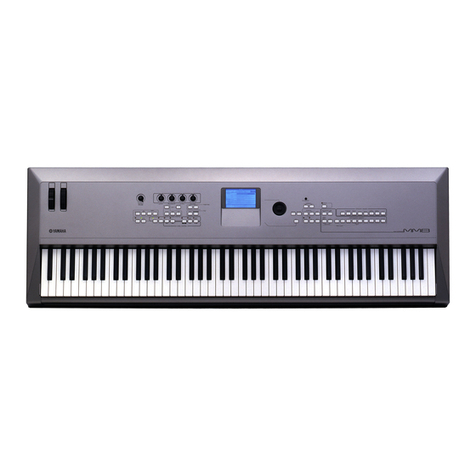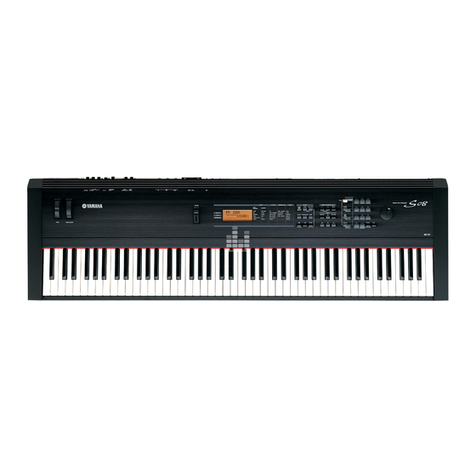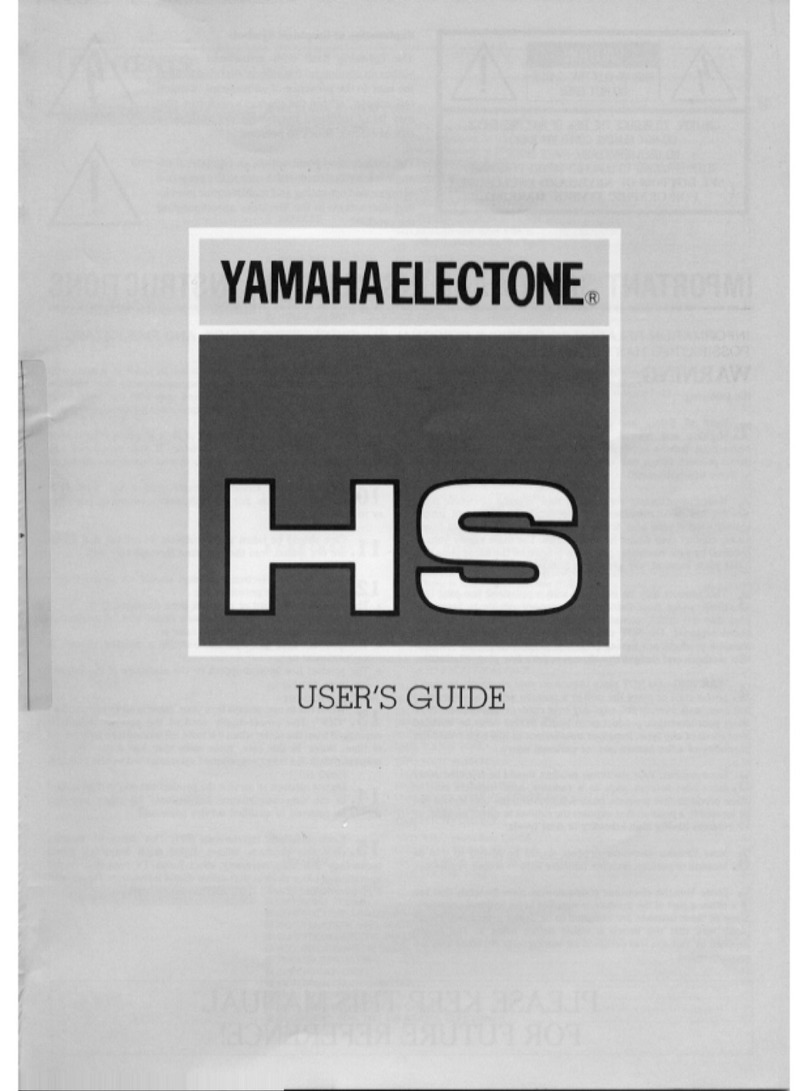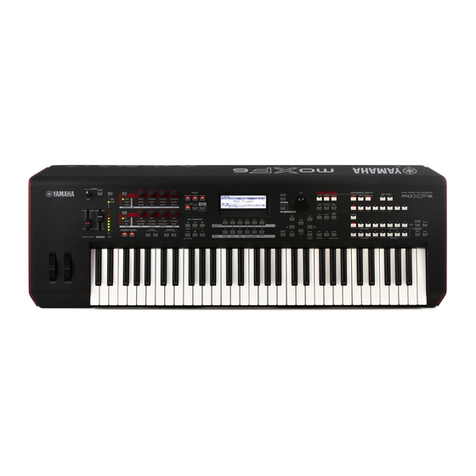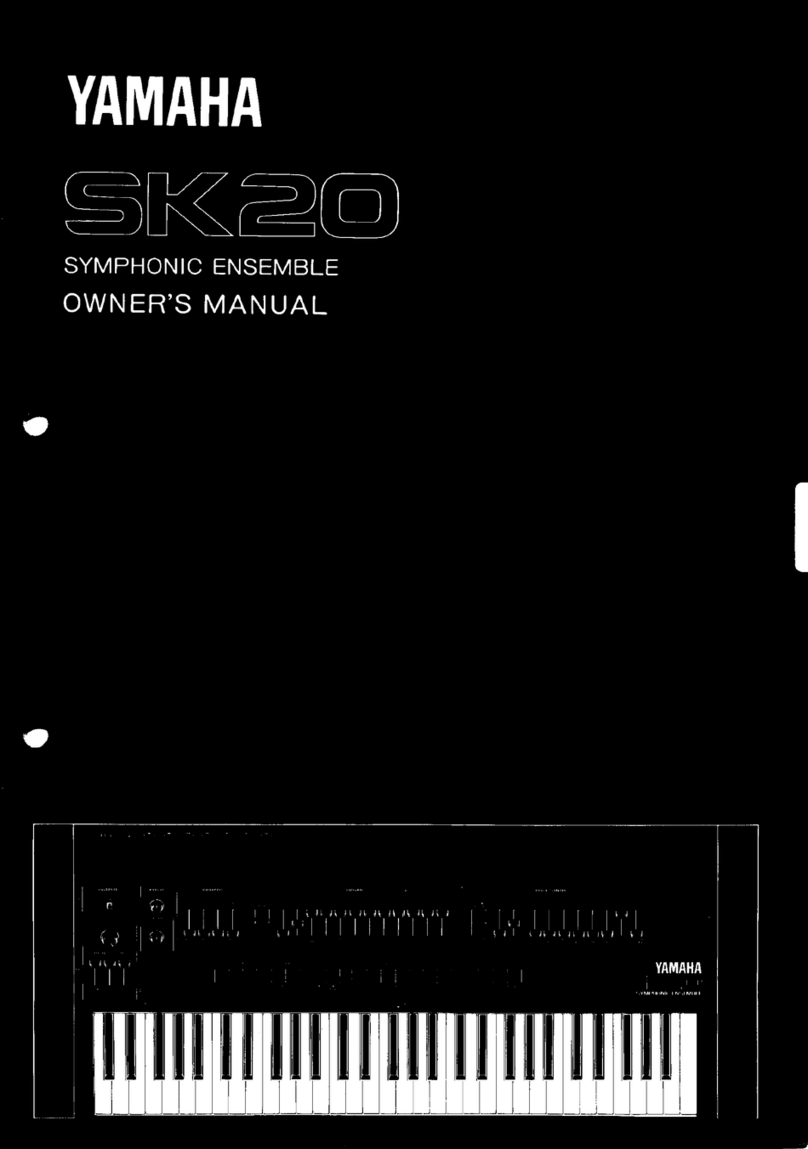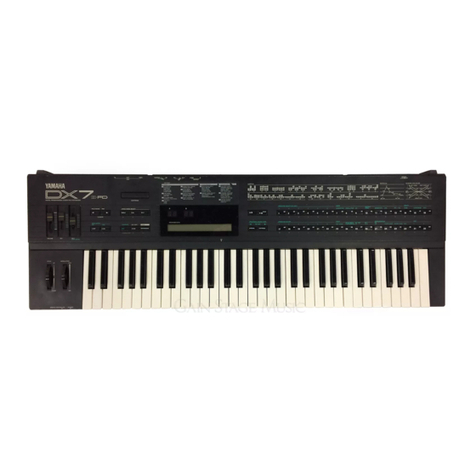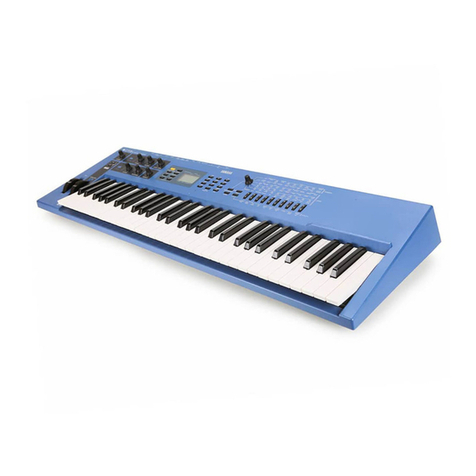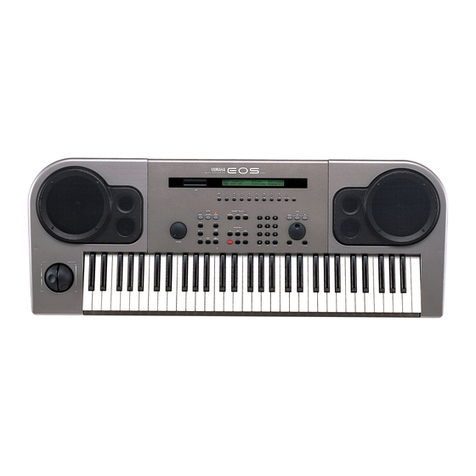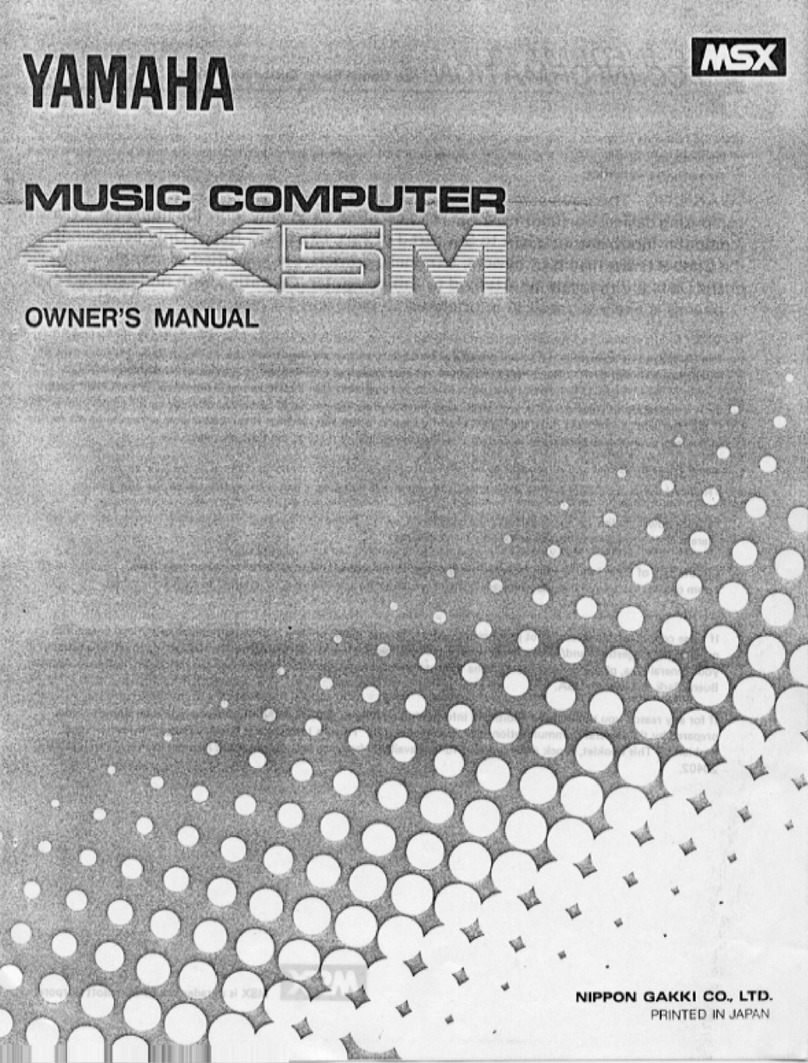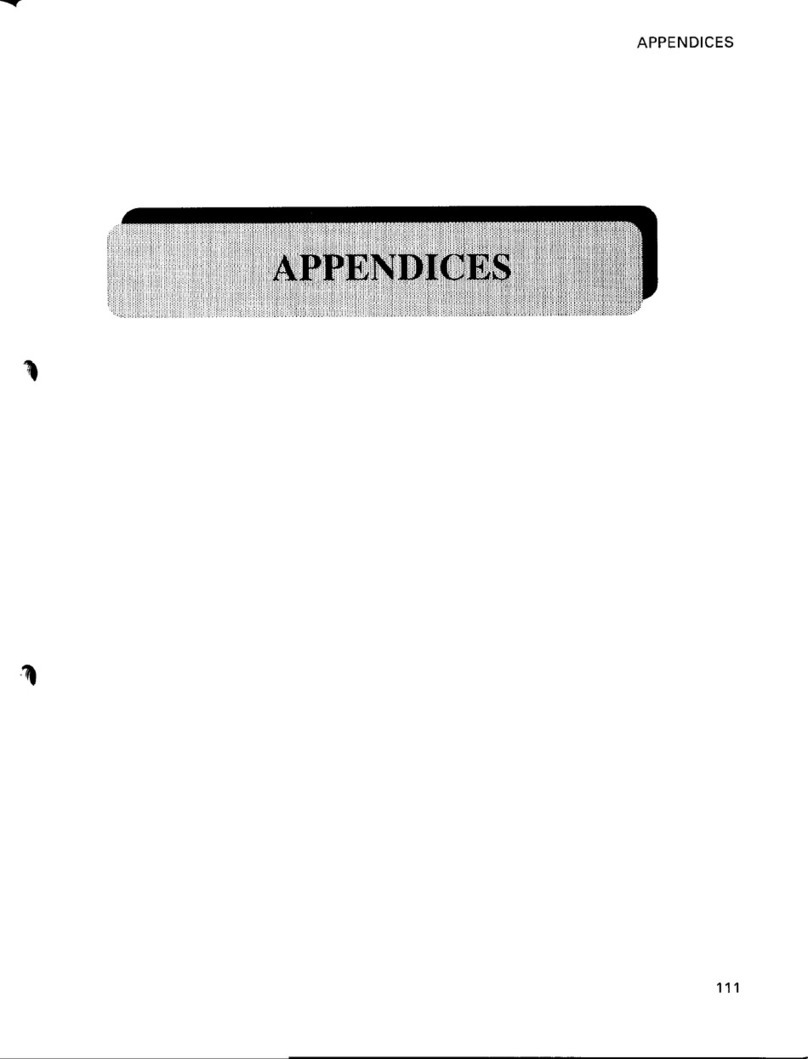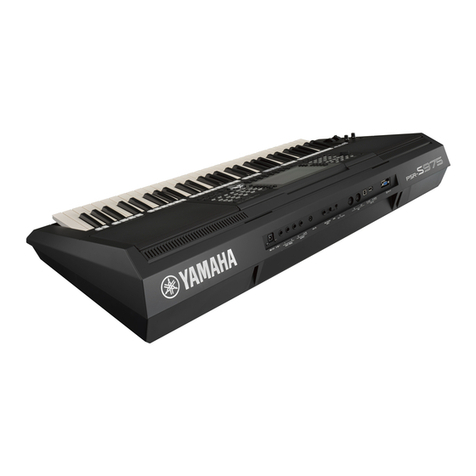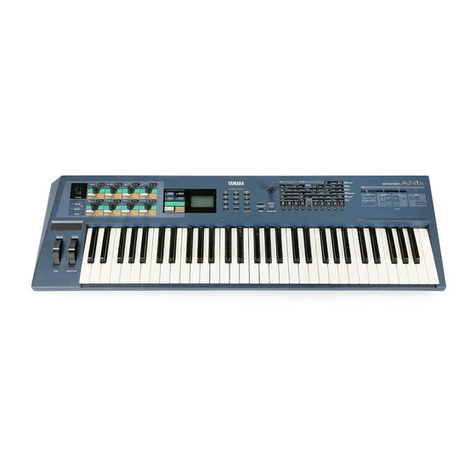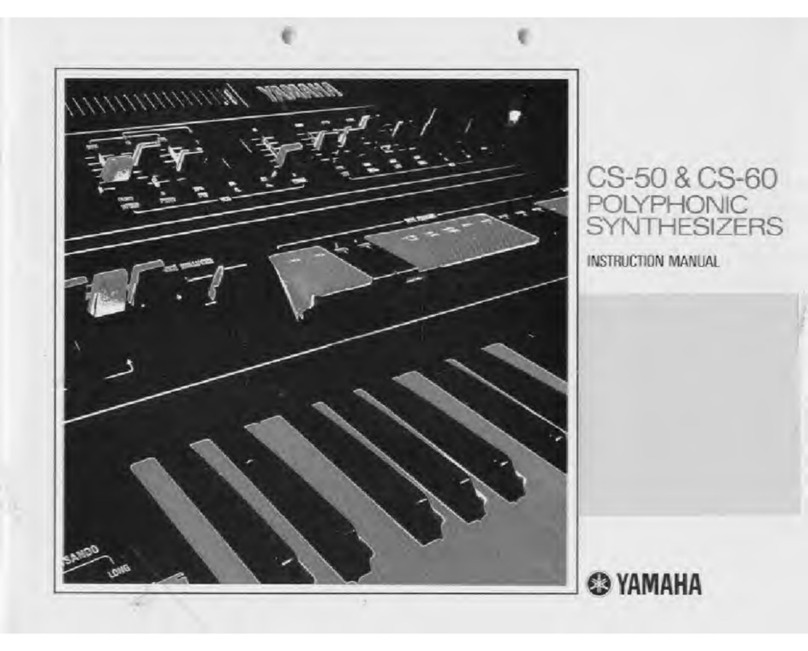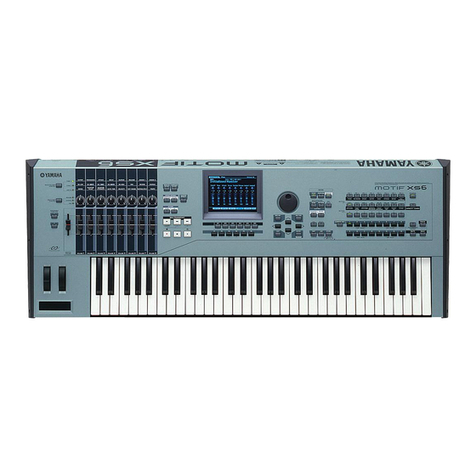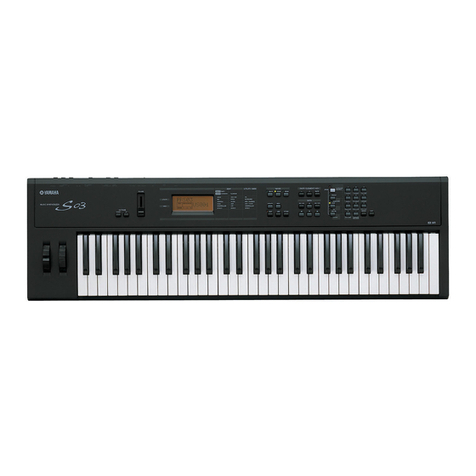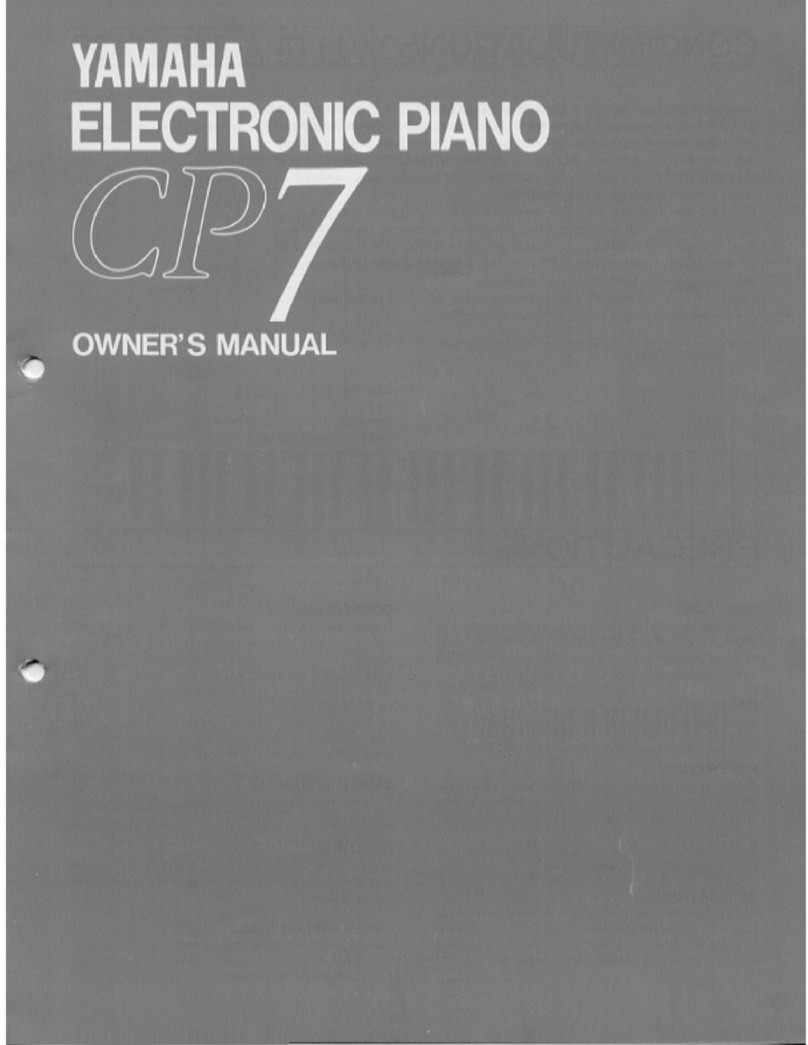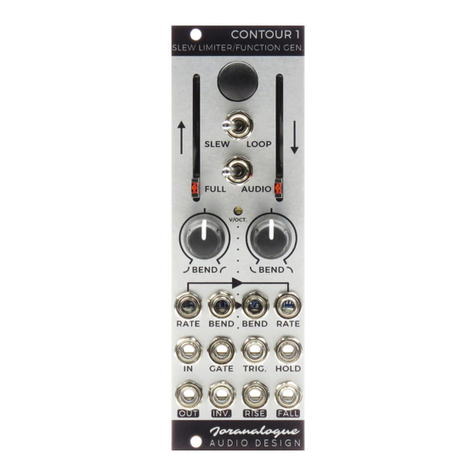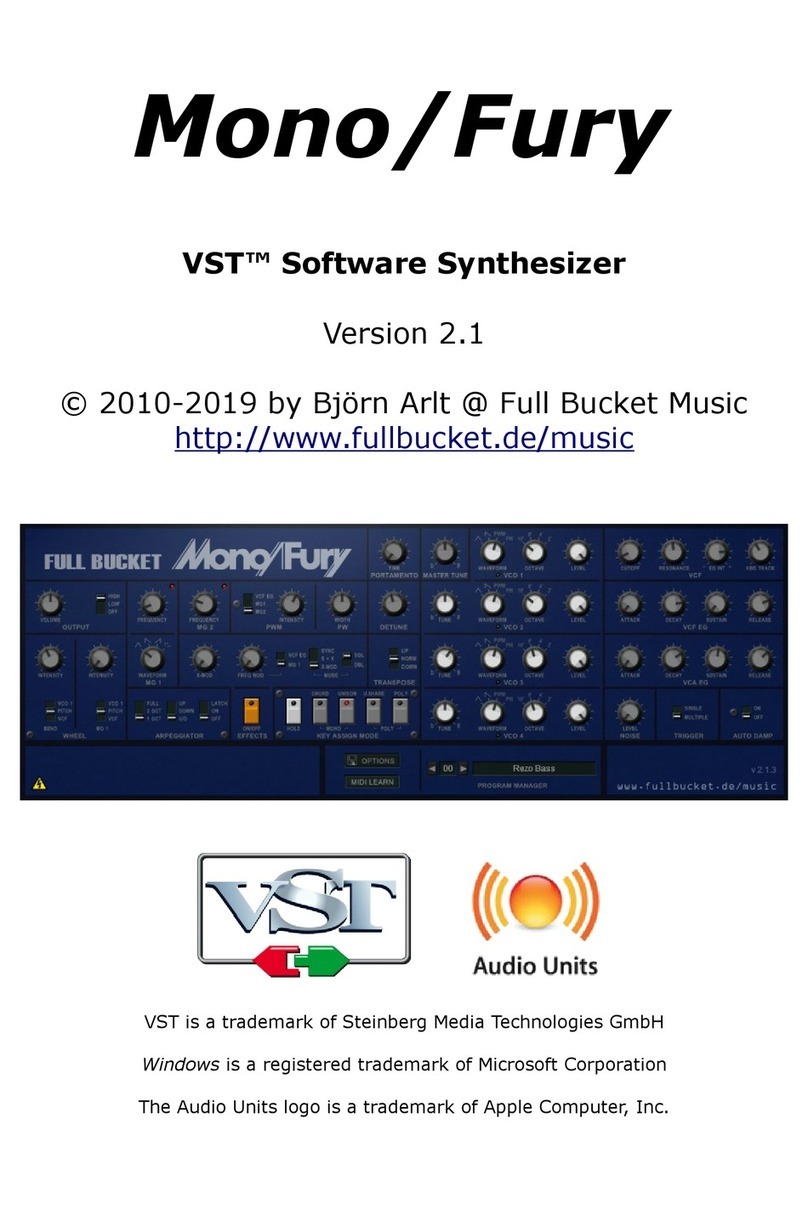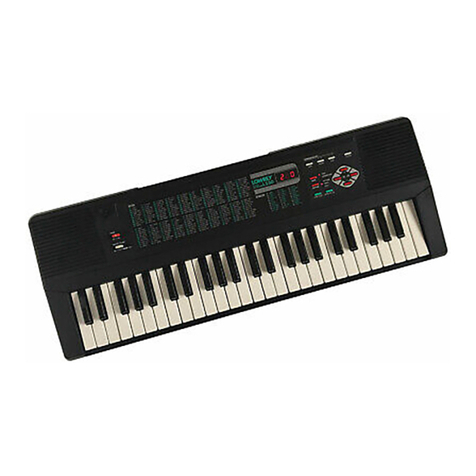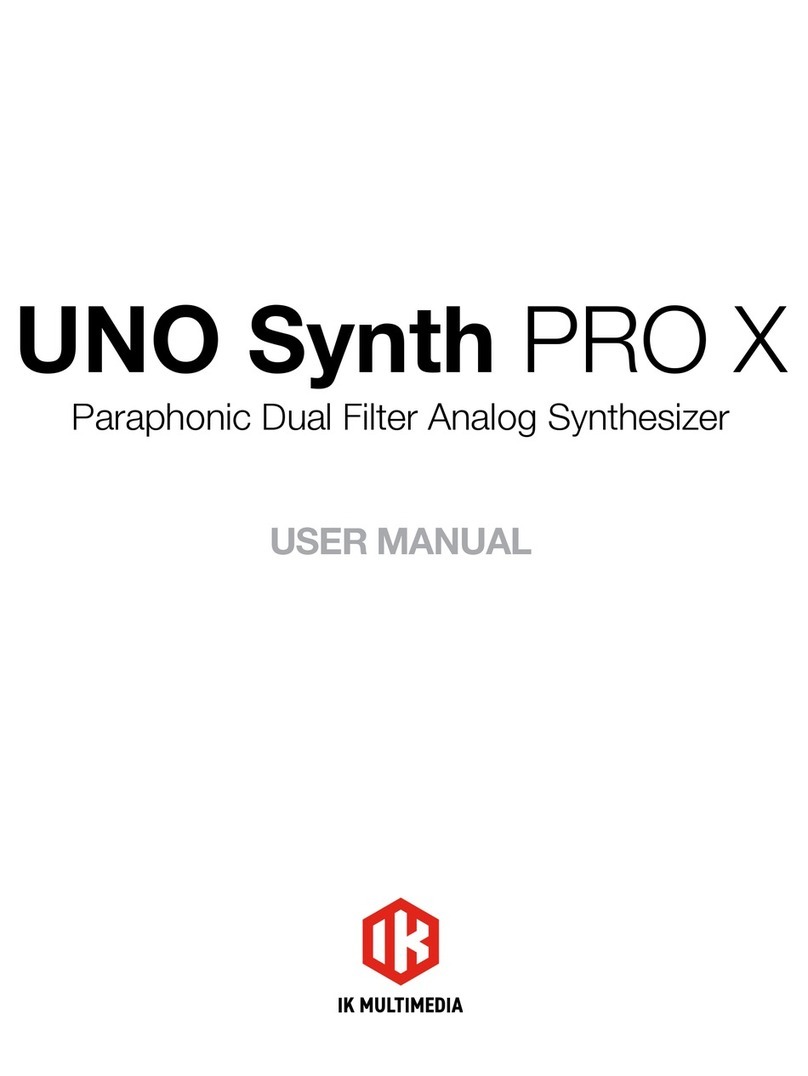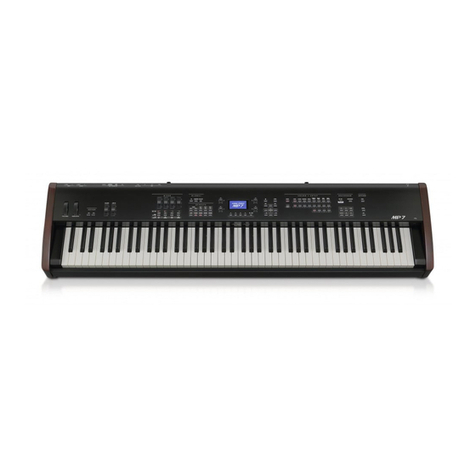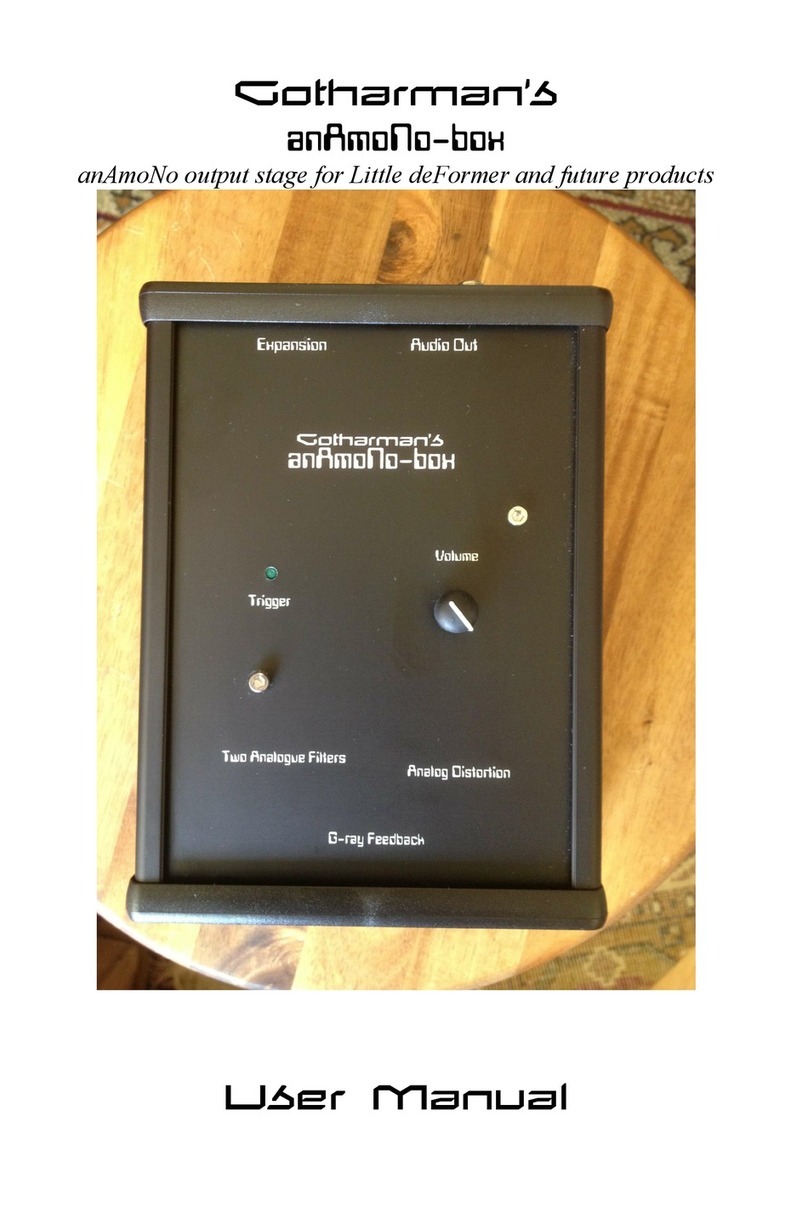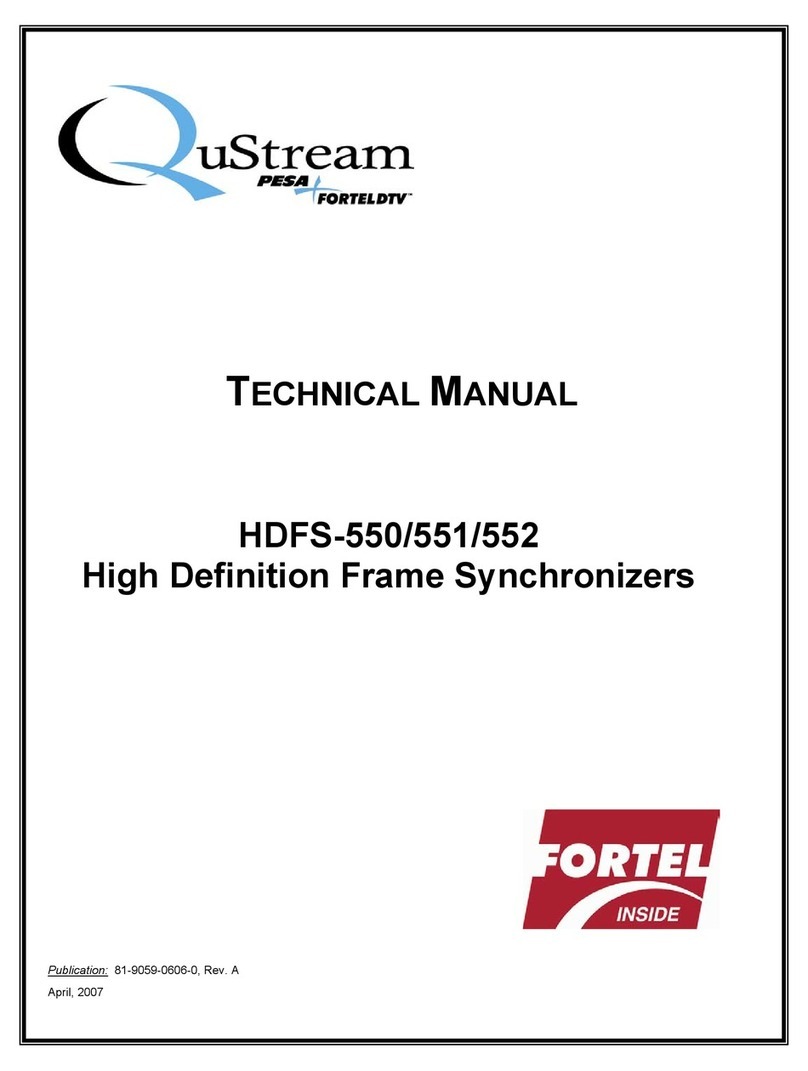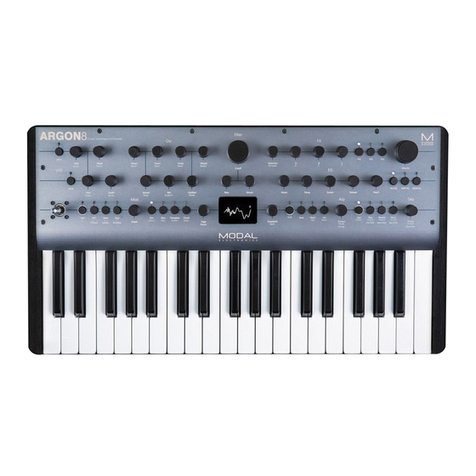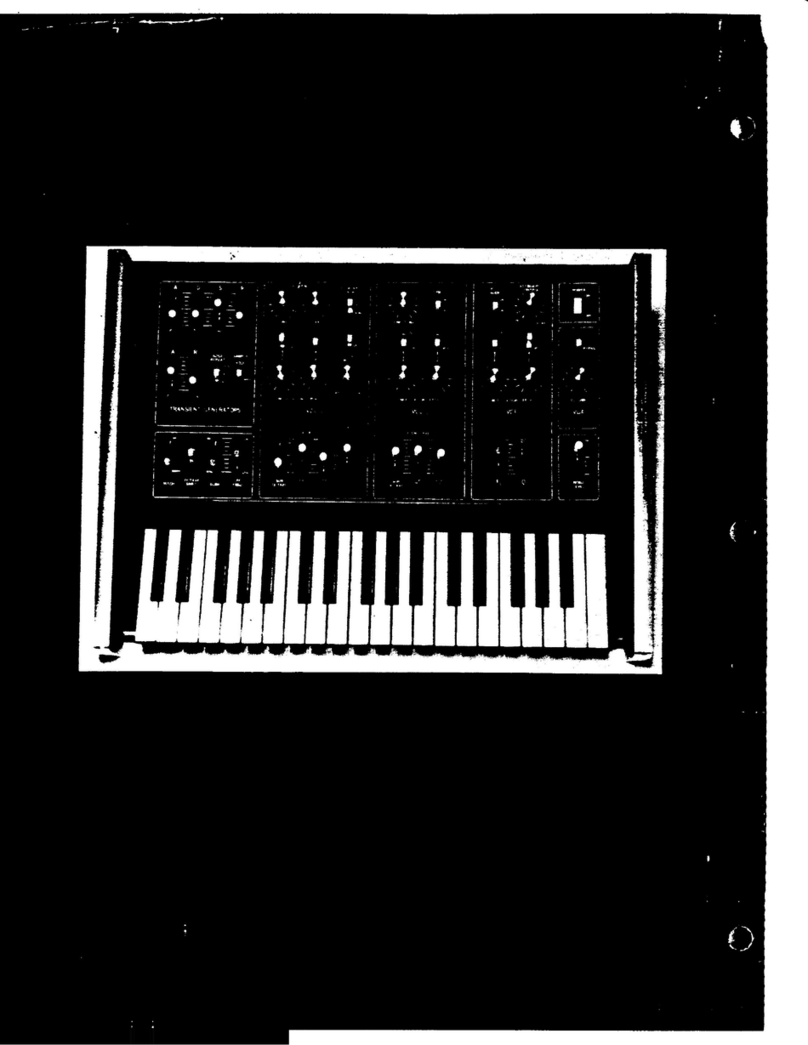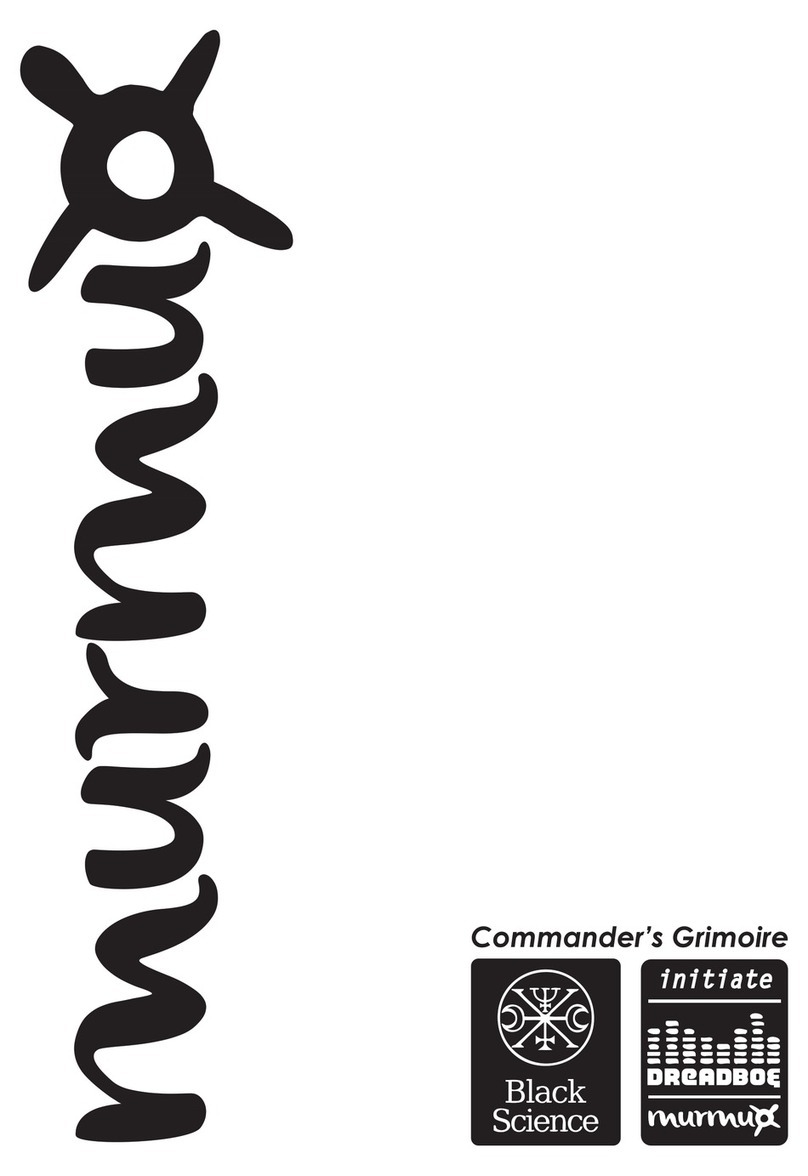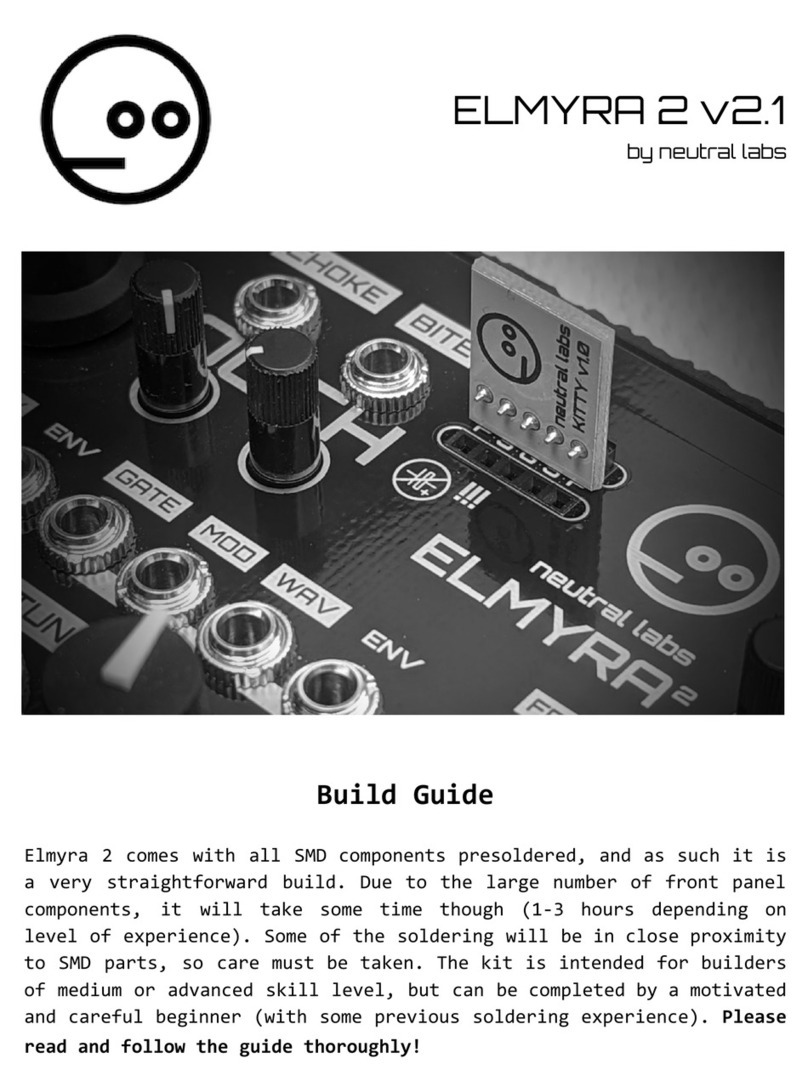
VOICECOMMON....................................................29
NAME
....................................................................
31
CONFIGURATION
..............................................
31
EFFECT
(Type &
Depth)....................................
31
PITCH BEND
........................................................ 32
WHEEL (Amplitude & Pitch Modulation)..........32
AFTERTOUCH (Amplitude & PitchModulation,
Pitch& LevelControl).....................................33
ENVELOPE (Attack & Release Rates).............33
RANDOM (Element, Level & Detune)..............34
VOICE VECTOR......................................................35
LEVEL
SPEED
(Vector
Rate).............................
37
LEVEL
RECORD
..................................................
37
LEVEL EDIT(Step,X-axis, Y-axis& Time).....37
DETUNE
SPEED
(Vector
Rate).........................
39
DETUNE
RECORD
..............................................
39
DETUNE EDIT
(Step, X-axis, Y-axis & Time)........................39
ELEMENT TONE....................................................41
WAVE
TYPE
........................................................
43
ELEMENT
COPY
.................................................
45
FREQUENCY
SHIFT
..........................................
45
VOLUME
..............................................................
46
PAN
........................................................................
46
VELOCITYSENSITIVITY.................................46
AFTERTOUCH SENSITIVITY..........................47
TONE (FMElements B and D Only).................47
LFO(LowFrequency Oscillator)AM Depth,
PM Depth, Type, Delay, Rate & Speed
.........
48
ELEMENTENVELOPE.........................................51
TYPE.
.....................................................................
53
ENVELOPE COPY.
.............................................
54
DELAY (Delay Rate & Element ON/OFF).......54
INITIAL LEVEL
...................................................
54
ATTACK
(Level
&
Rate).....................................
55
DECAY 1
(Level
&
Rate)....................................
55
REFERENCE SECTION
3.VECTORS............................................................14
Voice Configurations.............................................14
Two Types of Vectors:Manual & Dynamic........14
Manual Vector
Control
.........................................
15
An
Exercise.
..........................................................
16
Recording an OriginalDynamic Vector................20
The
STORE Key
....................................................
23
Conclusion
..............................................................
24
4.INSTANT VOICE PROGRAMMING............. 25
Conclusion
..............................................................
26
1.SETTINGUP YOUR SYSTEM..........................9
Connections
.............................................................
9
Power-on
Procedure
................................................
9
Enjoy
the
Demos
...................................................
10
2.SELECTINGAND PLAYING VOICES..........11
ThePRESET,INTERNAL and CARD Voice
Memories..........................................................
11
Selectingthe VOICE PLAY Mode,a Voice
Memory, and
Voice
..........................................
12
Overlapping Voice
Selection
.................................
13
TUTORIALS SECTION
PRECAUTIONS ..........................................................2
THE CONTROLS & CONNECTORS......................3
HOW TOUSE THISOPERATING
MANUAL................................................................1
CONTENTS
